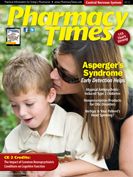Cold Watch
Soap and Water Are Better than Hand Sanitizers for Protection Against Colds
Hand sanitizers containing ethanol are frequently used as a substitute for washing hands with soap and water, but the results of a new study find that the sanitizers are not as effective at inactivating viruses that cause colds. Researchers led by Carita Savolainen-Kopra, PhD, of the National Institute for Health and Welfare in Helsinki, Finland, tested the ability of a single round of cleaning hands with soap and water against a single round of cleaning hands with hand sanitizer containing ethanol to remove rhinovirus that had been administered to the skin of the study participants.
The results showed that, after washing with soap and water, the virus was detected on the left hand of 3 of 9 participants and the right hand of 1 of 9 participants. By comparison, the virus was detected on both hands of all participants who washed their hands with hand sanitizer. The researchers conclude that thoroughly cleaning hands with soap and water is an effective way of ridding hands of rhinovirus, which is responsible for a large share of common colds.
California Forbids Sale of Dextromethorphan to Minors
As of January 1, 2012, California became the first state in the country to limit sales of OTC cold medicines containing the powerful cough suppressant dextromethorphan to only those older than 18 years. The ingredient is found in a range of OTC medications, including Robitussin-DM, Mucinex-DM, Delsym, Coricidin, and NyQuil.
Dextromethorphan has become a popular recreational drug among teenagers, who use it to produce hallucinogenic effects. According to the San Francisco Chronicle, surveys have found that as many as 1 in 10 teenagers have abused the substance, which is safe at recommended doses, but can in rare cases cause rapid heartbeat, involuntary muscle movements, liver damage, seizures, and even death. Since 2003, the Chronicle reports, dextromethorphan has been the most commonly abused substance reported by teenagers to the California Poison Control System, which says that telephone consultations regarding the drug for patients aged 6 to 17 years have increased 850% over the past 10 years.
Under the new law, knowingly selling or giving products with dextromethorphan to anyone younger than 18 years will be categorized as an infraction, punishable by a fine of up to $250. Even before the law was passed, some drugstore companies in the state, including Walgreens, already had policies requiring their employees to check identification before selling medicines with dextromethorphan. Some of the supporters of the California law would like a similar law to be passed by Congress to cover the entire country.
Low-Cost Device Could Distinguish Cold from Other Maladies
A newly developed medical sensor has the potential to allow for diagnosis of diseases ranging from the common cold to lifethreatening immune deficiencies at an extremely low cost. The thumbnail-sized device, called an integrated microfluidics-waveguide sensor, sorts and counts cells in small samples of blood and other body fluids. According to a paper describing the device that appeared online in the journal Biomicrofluidics on March 7, 2012, it is capable of counting as few as 100 cells per microliter of blood.
The device was originally conceived as a simple, rapid way to test newborns for severe combined immunodeficiency (“bubble boy disease”), but it has a wide range of potential applications. In one scenario imagined by its designer, Manish Butte, MD, PhD, an assistant professor of pediatrics at the Stanford University School of Medicine, the device could be used in a doctor’s office to diagnose a runny nose. High numbers of one type of white blood cell would indicate allergies, high numbers of another would indicate a sinus infection, and high numbers of a third would indicate a common cold.
In order to be tested using the sensor, a patient’s body fluid sample is mixed with antibodies that bind to the type of white blood cell in question. (The antibodies are each attached to a tiny bead of magnetic iron.) The mix is then injected into a small channel on top of a piece of glass impregnated with potassium ions and with magnets underneath it. Laser light shines down the channel and, as some of it is blocked by the iron beads, the pattern of light detected at the far end of the glass indicates how many of the white blood cells in question are present.
The prototype sensor cost $60 to make using off-the-shelf electronic components, although the cost would be lower if it were manufactured in bulk. By comparison, lab machines used to count cells cost tens of thousands of dollars.

